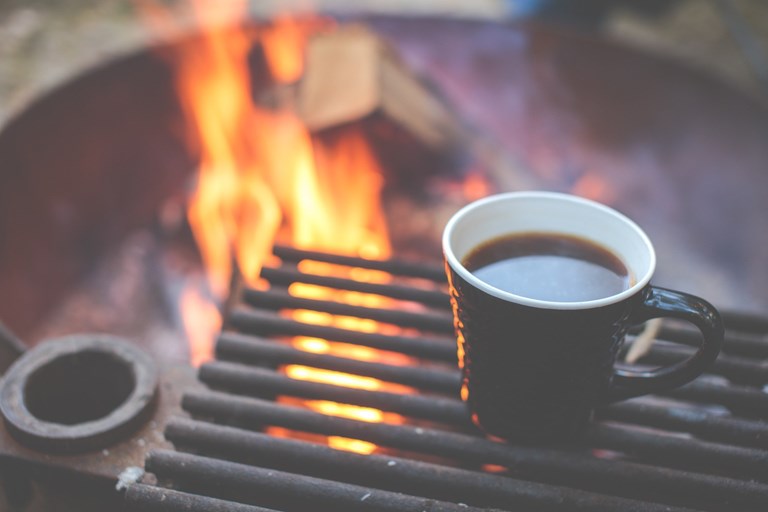Your cart is empty!
Make checkout easy by booking all your reservations at once. Add your sites from different campgrounds into your shopping cart* and then choose checkout.


The problem with campfires is that when you most want them – when it’s dark and raining – they can be notoriously hard to get going.
I’ve had my share of frustrating fire experiences. Perhaps the worst was the time I was out hunting and trudged around a mountain for a while in a mix of snow and icy rain, anticipating a nice warm lunchtime fire. By lunch, there was a blustery wind to go with the wet. But it was not to be. Despite having paper birch bark, which is explosively flammable, and several different kinds of nifty fire starters, I ate my lunch coldly and sadly.
Fires aren’t complicated, but if you have wet wood or don’t know how to coax them along they can be stubborn as an IRS agent, and for that reason many people have given up and go straight to charcoal or propane grills. Or they dump lighter fluid over a pile of wood and throw a match on, which is not recommended by Smokey the Bear, or the surgeon general.
But controlling fire is arguably one of our species’ niftiest, and most important, tricks, and there’s no reason you can’t learn to make one.
Fires have three key ingredients: dry fuel, air for oxygen and a spark (mostly supplied in these lazy and degenerate times with a match or lighter).
How you combine these ingredients matters a great deal, and if you get careless with them, you’ll soon get the impression that fires are hard to start.
You’ll want a starter material, like paper torn in thin strips, wood shavings, or a cotton ball soaked in petroleum jelly, if you like cheating. You want enough of this material that it will burn for long enough for the fire to catch.
Sticks and logs should be as dry as possible, and from a tree that’s been dead a while. Many a fresh-cut piece of firewood looks deceptively flammable, but will sputter and spit out water when you try to burn it. Trees are plants, and they stay juicy quite a while after you cut them.
A rookie mistake is jumbling your wood into a pile and thinking as long as you have a match, everything should be alright. This is false.
You want a structure that brings the wood close enough together to let the flame jump from piece to piece, but keeps it far enough apart that plenty of air can get through. Get either of these factors wrong, and your fire will falter.
Over your starter fuel, the paper or bark, build a structure like a tipi or a log cabin, starting with tiny twigs, then gradually layering on larger and larger pieces. Don’t pile the wood so closely together that air can’t get through, and make sure you don’t increase the size of the wood too fast or the fire will consume the smaller sticks before it jumps to the larger ones.
My favorite by far is the log cabin style. You can put the starter material in the middle, then a large piece of firewood on either side to build on. Then put a stick across the two larger pieces like a bridge right over the starter material, to support tiny twigs. From there, criss-cross layers of increasingly larger sticks. It’s stable and allows for precise control over how far apart the pieces are, making sure there’s plenty of air.
If you’ve built your fire right, you can then use a single match to ignite the starter material, and it will go from there. If it falters, blow on it to give it more air or fan it with something.
Your perfect log cabin will eventually collapse into a bed of coals, but at that point you don’t have to be as picky about the structure. Still, the fire will burn better if you maintain a loose log cabin or tipi structure throughout.
Pro Tip: When your fire burns down to coals it's the perfect time to do some campfire cooking!
With a little practice, you’ll be able to wave away that lighter fluid with a suitably scornful expression and build a fire to be proud of.
Andrew Sharp is a journalist whose career has taken him around the Delmarva Peninsula. He enjoys camping, preferably off the beaten path, hiking, preferably on a beaten path, and hunting.
That doesn't mean this area has to always be empty. When you start reviewing camping options, your history will display here to help compare sites and find the best stay. You will be able to share your stay information with friends or family and save it for a later time if you have a KOA Account.
Make checkout easy by booking all your reservations at once. Add your sites from different campgrounds into your shopping cart* and then choose checkout.